Complete Guide to Hair Transplant Growth and Recovery Timeline

A hair transplant is a permanent solution to a receding hairline or thinning hair, but you won’t see the results overnight.
It’s important to be patient and follow our hair transplant aftercare and recovery instructions to get the best results out of your procedure.
This guide walks you through the full timeline and recovery process, detailing what to expect at each stage from the moment you step into the clinic to the day you see your final, permanent results.
Preparing for a Hair Transplant
Your journey begins with a consultation with your hair transplant surgeon. At Ziering Medical, we will assess your hair loss pattern and scalp condition using advanced technologies like the Ovio imaging system as well as discuss your expectations.
Your surgeon will design a customized treatment plan, taking into account factors like your age, quantity and quality of your donor’s hair, the number of hair grafts needed, and the best surgical technique for your goals. In addition to hair transplant surgery, your Ziering Surgeon will most likely recommend hair loss preventatives and therapies to improve hair and scalp health as well as to address the ongoing hair loss if needed.
As your surgery day gets closer, it’s important to avoid a few things to ensure everything goes smoothly.
You’ll need to stop taking any medications that thin your blood, avoid alcohol for a few days, and steer clear of smoking and caffeine.
These steps help your body heal better after the procedure. Be sure to follow the full set of pre-op instructions to get the best results.
Download Our Complete Hair Transplant Pre-Op Guide.
On the Day of Surgery
On the day of your surgery, you’ll undergo one of two advanced hair transplant techniques: Follicular Unit Excision and Extraction (FUE) or Microscopically Dissected Elliptical Excision (MDEE). Both methods are highly effective but differ mainly in how the donor hair grafts are harvested. After the safe donor harvest is complete, both surgical techniques follow the same steps of the hair transplant surgeon artistically creating the tiny recipient sites following the agreed hair transplant design and the Medical Technicians gently placing those hair grafts into those recipient sites precisely matching the angle, direction and orientation of the recipient sites ensuring that the transplanted hair grows in at an aesthetically enhancing angle and direction resulting in natural looking result.
FUE (Follicular Unit Extraction)
With FUE hair transplants, the donor zone, typically the back and sides of the head, is shaved short, and the healthy hair follicles are harvested directly from the donor area one at a time using a specialized tool.
This method leaves tiny, virtually invisible pinpoint scars and has a quicker recovery time, making it ideal for patients who prefer shorter haircuts or minimal downtime.
FUE Advantages:
- Minimally invasive
- No linear scarring
- Faster recovery
- Great for those who prefer shorter hairstyles.
MDEE (Microscopically Dissected Elliptical Excision)
Previously known as strip FUT, MDEE involves removing an elliptical strip of skin from the donor area. This method does not require the entire back and sides of the head to be shaved short – rather only the designated area that will be excised. This strip of donor tissue is slivered and dissected under a microscope into the naturally occurring individual follicular units of 1 – 3 hairs. These follicular units are then transplanted into the recipient sites at the proper angle, direction and orientation that the Ziering surgeon has created in the thinning areas. MDEE is particularly ideal for those who need a larger number of grafts in one session. While this method leaves a thin linear scar, it’s often recommended for patients requiring a larger number of grafts to achieve an aesthetic change or for the patient that does not have the aesthetic downtime to have the back and sides of their scalp shaved, so that they are able to return to work sooner.
This is also the preferred method for hair transplant for women because it does not require the donor area to be shaved short. Women are often reluctant to shave their heads for surgery, which is required for FUE. MDEE avoids this by only shaving a thin strip, making it more discreet.
MDEE Advantages:
- Efficient for larger transplant sessions maximizing the use of the available donor and leaving more hair available for future procedures if needed
- Provides a higher yield of donor grafts safely in one surgery session
- Effective for restoring extensive hair loss
- Typically more cost-effective for extensive hair restoration per graft compared to FUE, especially for larger procedures.
- The thin linear scar is easily hidden by surrounding hair, especially in women who usually wear longer hair, so the scar is rarely visible.
Regardless of the technique used, hair transplantation is performed under local anesthesia so you won’t feel any pain during the procedure.
You’ll remain awake throughout, often watching your favorite TV show, movies, or listening to music in our state-of-the-art facility to pass the time.
Post-Surgery Care
Right after surgery, you’ll receive instructions on how to care for your scalp. Expect some tenderness, swelling, and redness in both the donor and recipient areas. You’ll be given medications to help manage discomfort and minimize the risk of infection. The next day, you will be seen for a complimentary hair wash and laser treatment.
Hair Transplant Timeline & Recovery
On average, it takes about 5 – 7 days for initial recovery from a hair transplant procedure. The transplanted hairs begin growing in slowly over time with the first growth appearing as very fine, soft hairs that will become thicker and darker with full results typically visible after 12 months and up to 18 months for some patients.
We require each patient to follow detailed post-op instructions so they heal properly and achieve the natural results they want.
First Week Post-Op
- During the first week, your scalp will begin to heal.
- Massaging your forehead is key for reducing any swelling. Avoid looking down as that causes fluid to pool and increases swelling. Hold your phone at eye level.
- Tiny scabs will form around the transplanted hair follicles and it’s important to follow post-op care guidelines closely to avoid disturbing these grafts.
- You’ll be instructed on how to gently wash your hair using a specific technique to avoid damaging the grafts.
- Avoid strenuous activities during this time. You can return to work within a few days if your job doesn’t involve physical labor but take it easy for the first week.
Two to Four Weeks Post-Op
- The transplanted hairs will begin to shed within two to three weeks but this is not a reason to panic. This is a normal part of the process.
- You may experience itching or a tingling sensation as your scalp heals. Avoid scratching the transplanted area, as this can disturb the grafts.
- By the end of the first month, most patients can resume normal activities, including light exercise.
- Avoid direct sun exposure at all times and always wear a hat when outside to protect your scalp.
Three to Four Months Post-Op
- At this stage, you’ll start to notice the first signs of new hair growth.
- The hairs may initially appear fine and light in color, but this is just the beginning. Over time, they will thicken and darken.
- You’ll have follow-up appointments with your surgeon to check on the progress. At Ziering Medical, we monitor each stage of recovery closely to ensure the best results.
Five to Eight Months Post-Op
- By this point, the majority of patients experience noticeable hair growth.
- The new hairs will have a more natural texture, and the overall density will begin to increase. Some areas may take longer to fill in so being patient is key here.
- The redness and swelling should have completely subsided by now, and your scalp will feel much more normal.
- You can resume all activities, including vigorous exercise and swimming.
12 Months Post-Op
- At the one-year mark, most patients see the full results of their hair transplant.
- The transplanted hair will look and feel just like your natural hair, and you can style it as you normally would.
- While the results are permanent, continued care is important. Following the prescribed hair loss prevention therapies and using recommended hair care products from Ziering Medical will help maintain the health of your new hair.
Download Our Complete Hair Transplant Post-Op Guide.
How do I know if my hair transplant is successful?
You’ll know your hair transplant worked if you see new hair starting to grow around 3-4 months, with continued growth is one indicator. Keep in mind that mature results will not be visible until 12 months. For some patients, particularly women, the final growth may not be realized until 18 months.
The new hair should blend in well with your existing hair, and there shouldn’t be any obvious scarring or major hair loss after the first recovery phase.
Over time, the bald or thinning areas should fill in naturally. Regular check-ins with your surgeon will also help confirm everything is on track.
What is the best age for hair transplant?
This varies by patient depending on age, the cause and amount of hair loss. Understanding and assessing a patient’s hair loss stage, allows surgeons to make a more accurate and lasting treatment plan. The first step may be taking steps to stabilize the hair loss.
For example, younger individuals experiencing male pattern hair loss may need to wait until the hair loss pattern is clear. If you have early stage hair loss, we may recommend nonsurgical options like laser hair therapy, medications, or topicals.
We recommend consulting with one of our hair loss specialists to help determine the ideal time and approach based on your unique situation.
How much younger do you look with hair transplants?
A hair transplant can make you look about 5 to 10 years younger. Restoring your hairline and adding density to thinning areas helps create a more youthful and refreshed appearance.
The actual impact varies based on your age and the extent of hair loss.
Schedule a Private Consultation.
Led by celebrity surgeon Dr. Craig Ziering, Ziering Medical has the most trusted hair restoration doctors in New York City, Beverly Hills, and Connecticut.
Our surgeons have 75+ years of combined surgical experience and have performed thousands of successful hair restoration surgeries.
If you want to know more about Ziering Medical’s post hair transplant care, schedule a private consultation with one of our hair transplant surgeons today.
We serve patients all over the greater Tri-state area of New York, New Jersey, and Connecticut as well as the greater Southern California area from Los Angeles and Beverly Hills to Newport Beach and San Diego.
Case Studies: Hair Transplant Progress Photos
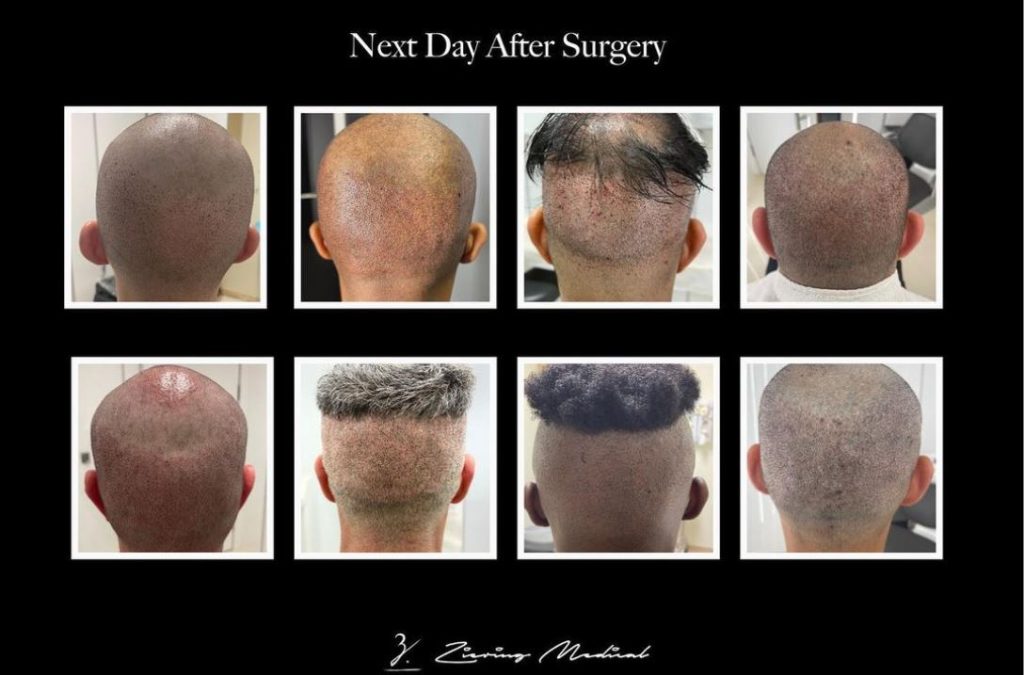
FUE hair transplant photos next day after surgery
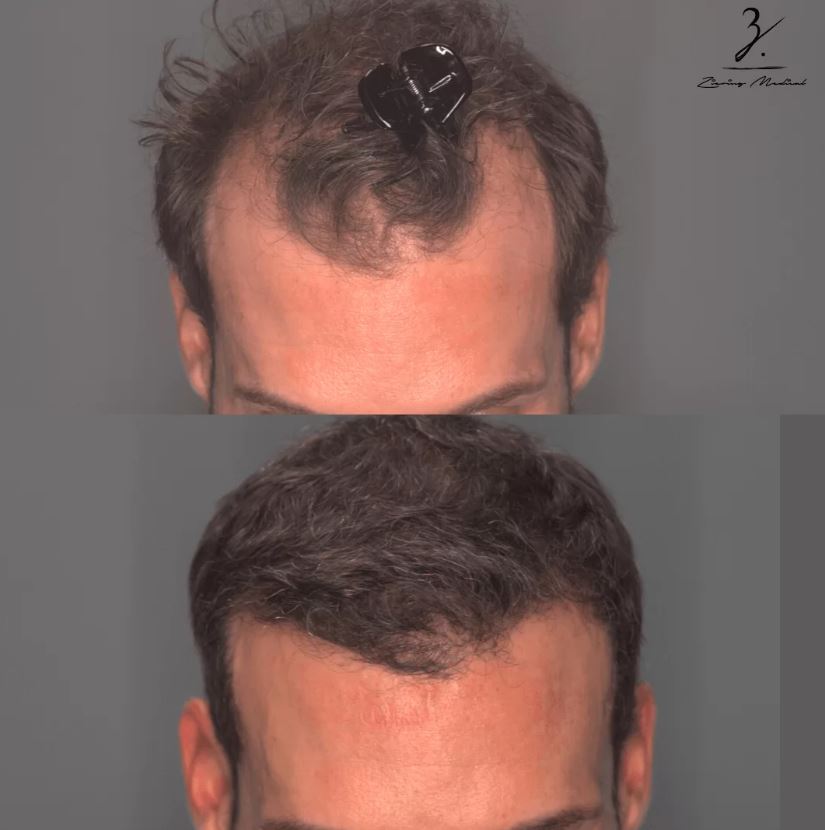
3113 Follicular Units, 1 MDEE Hair Transplant, Showing Pre Op and 5 Months Post Op
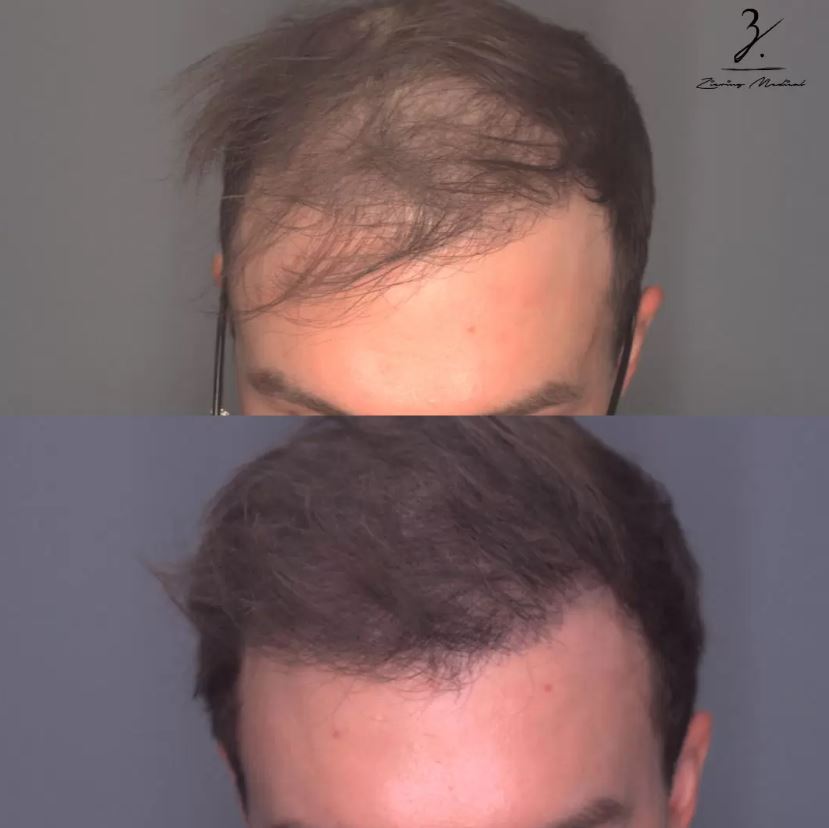
3250 Follicular Units, 1 MDEE Hair Transplant, Showing Pre-Op and 6 Months Post-Op
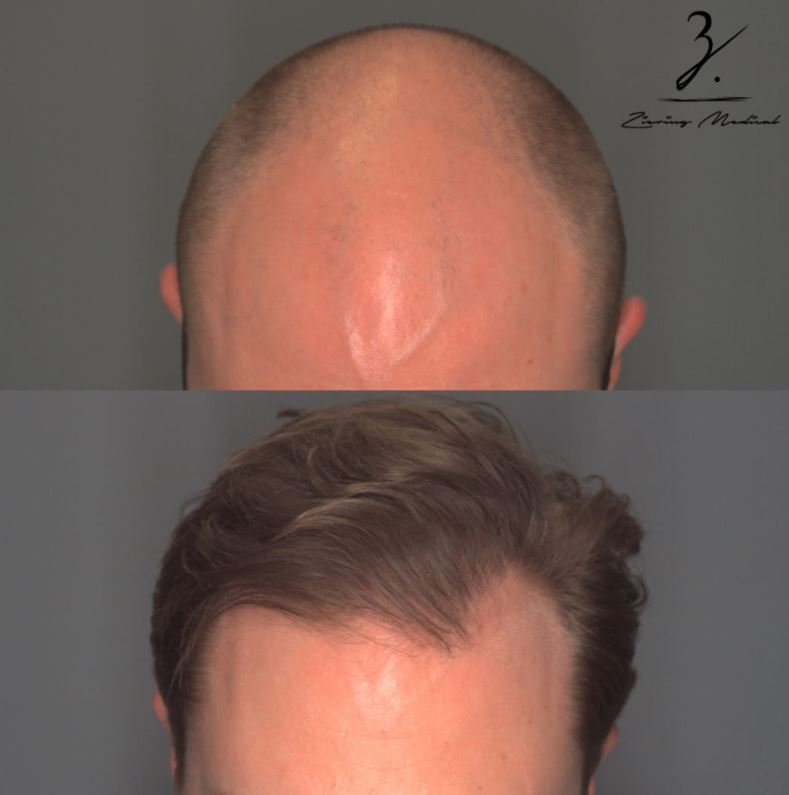
2800 Follicular Units, 1 FUE Hair Transplant, Showing Pre-Op and 10 Months Post Op
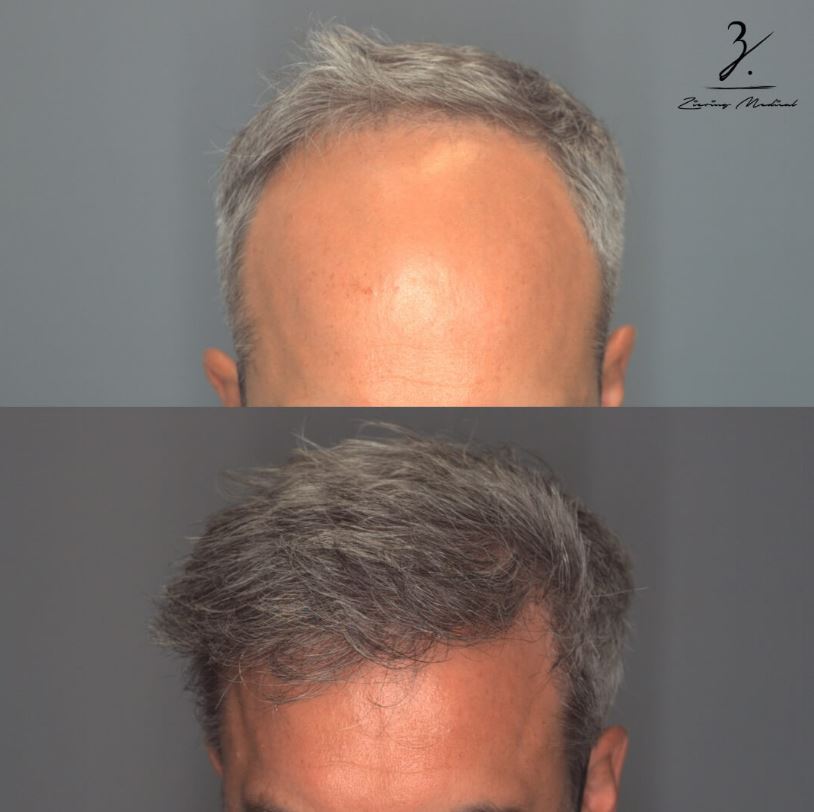
2031 Follicular Units, 1 FUE Hair Transplant, Showing Pre-Op and 12 Months Post-Op

3739 Follicular Units, 1 MDEE Hair Transplant, Showing Pre-Op and 18 Months Post-Op + Z-Factors
